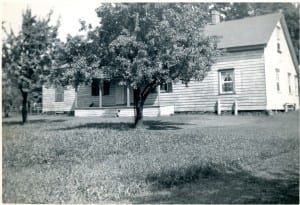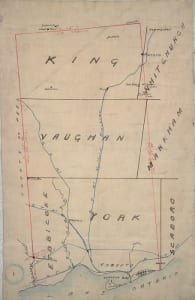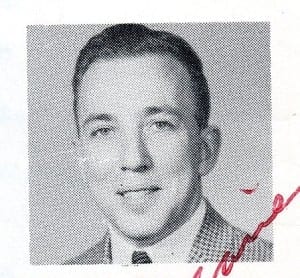In worldwide colonial history Indigenous peoples succumbed to disease arriving with settler society, were pushed aside to marginal lands, or were killed; many resisted
At the end of a previous post, I’ve added a comment regarding details related to land grants received in Upper Canada by Colonel Samuel Smith and other military personnel following the Wars of the American Revolution.

Back view (facing south) of Colonel Samuel Smith farmstead house, located at what are now the school grounds of the former Parkview School. Originally a log cabin, built in 1797, the house had siding and extensions added to it over the years. Photo © Betty Farenick and family
By way of bringing attention to the comment, I have devoted the current post to it.
A valuable overview of the colonial history that I highlight below is available at a study entitled: The Transformation of the World: A Global History of the Nineteenth Century (2014) by Jürgen Osterhammel.
Among other things, Osterhammel refers to especially strong resistance by the Maori in New Zealand.

Original Plan of the Toronto Purchase, 1787-1805. The image, which by way of copyright details is in the public domain, can be located at the Toronto Public Library website by doing a search for “r-125.jpg.” The plan is part of the J. Ross Robertson Collection of maps. Link:
The processes by which Indigenous land was acquired in the course of colonial history is also outlined in Seeing Like a State: How Certain Schemes to Improve the Human Condition Have Failed (1998) by James C. Scott and in The Great Land Rush and the Making of the Modern World, 1650-1900 (2003) by John C. Weaver.
I have posted an image of the Original Plan of the Toronto Purchase, as the use of cadastral maps during the premodern era, as a way for states to establish governance including in colonial territories, is a topic of interest to me.
James C. Scott in Seeing Like a State (1998) addresses the topic of cadastral maps in a manner that is clear and easy to understand.
It took me a while to understand what the Toronto Purchase entailed. Such an understanding requires a comprehension of Indigenous perspectives on the reality of Canadian history.
The Original Plan of the Toronto Purchase – and the history behind it – warrants close study.
Life and times of British colonel, politician, and colonial administrator
In my comment at a previous post I note that:
At a post about local history in Toronto, I’ve added more details from the historical record regarding the life and times of Colonel Samuel Smith.

Graeme Decarie. Source: Malcolm Campbell High School 1962-63 yearbook. At the conclusion of this post I feature a comment from Dr. Decarie, who taught high school history before going on to graduate school, after which he taught history at Concordia University and presented news commentary at CBC Radio and later at CJAD Radio.
The colonel, who in his retirement from military service came to own a huge tract of land in what is now South Etobicoke, didn’t actually buy the land.
Instead, it was a typical British colonial land grant that he received.
In the process the original Indigenous inhabitants of the land were pushed aside in keeping with standard colonial practice.
Worldwide colonial history
In worldwide colonial history the Indigenous inhabitants of such lands succumbed to disease arriving with settler society, were pushed aside to marginal lands, or were killed – including as the intended result of death by starvation.
Settler societies also generally sought to destroy Indigenous cultures, cultural practices, belief systems, and languages via a policy of coercive assimilation – through a process, that is, of cultural genocide. We can, in fact, speak of a Canadian genocide.
As has also been standard practice worldwide, settler histories of the kind taught in schools have until recent times tended to ignore or gloss over such details.
Retired military men such as the colonel received land grants west of York (now Toronto) so that York could be defended in the event of an American overland attack from the west directed at York.
Retired officers received huge land grants; lower ranks received smaller ones.
As it turned out, during the War of 1812 such an attack and subsequent occupation of York did occur but the American forces arrived via Lake Ontario instead of overland.
Evidence points toward 1760 not 1756 as the colonel’s year of birth
As I also note at a previous post, it may be the case that the colonel was born in 1760 not 1756.
In her archaeological report of 1984, Dena Doroszenko offers evidence suggesting that 1760 is the more likely year of birth. The latter archaeological report was based on a preliminary dig at the site in Long Branch where the colonel had built his log cabin.
A previous post provides background about the preliminary dig: Whatever happened to the Colonel Smith homestead artifacts found in 1984?

Graeme Decarie of Ottawa comments:
A colonel of his time often raised his own regiment. The soldiers commonly had to buy their muskets from him.
The word ‘colonel’ by the way means ‘leader of a column’.
And that is my total wisdom.
[End]
Caption for photo on right reads: “Graeme Decarie, Aug. 6, 2016. Moncton, N.B. In an email comment about the photo, Graeme writes: ‘It doesn’t capture the lush glory of my hair.'”